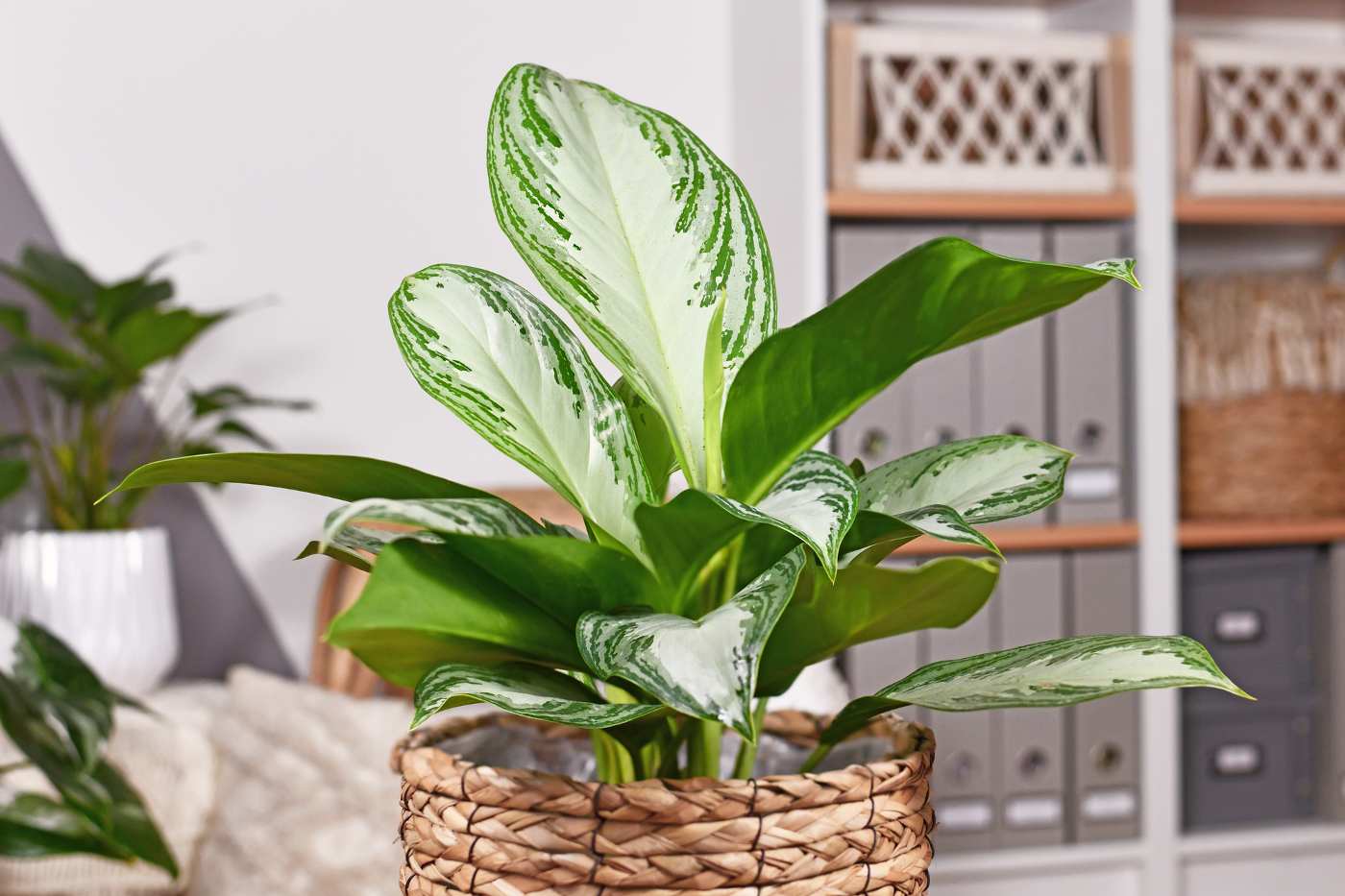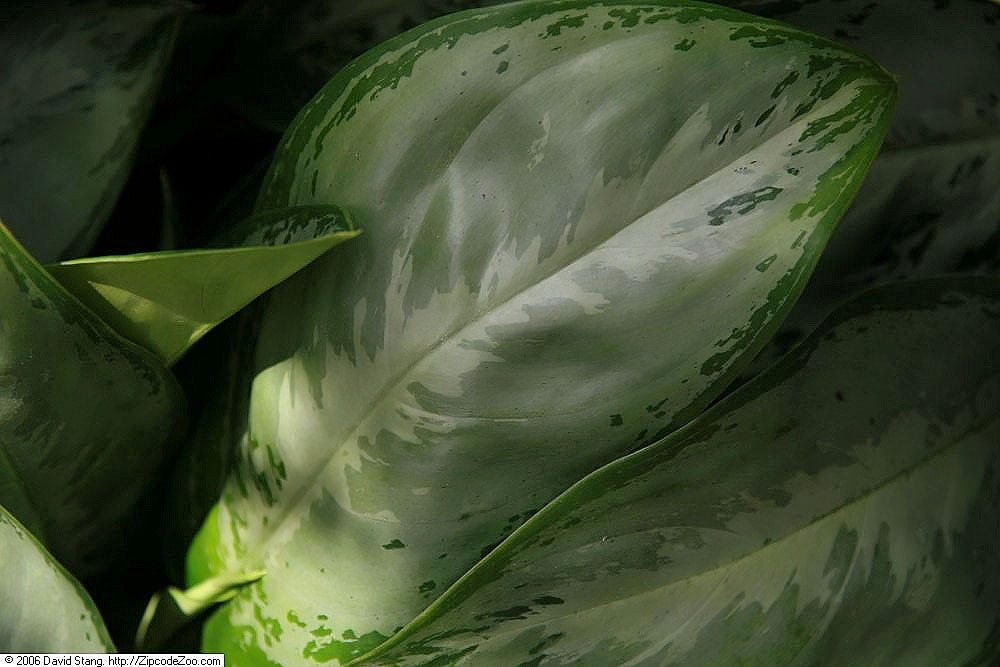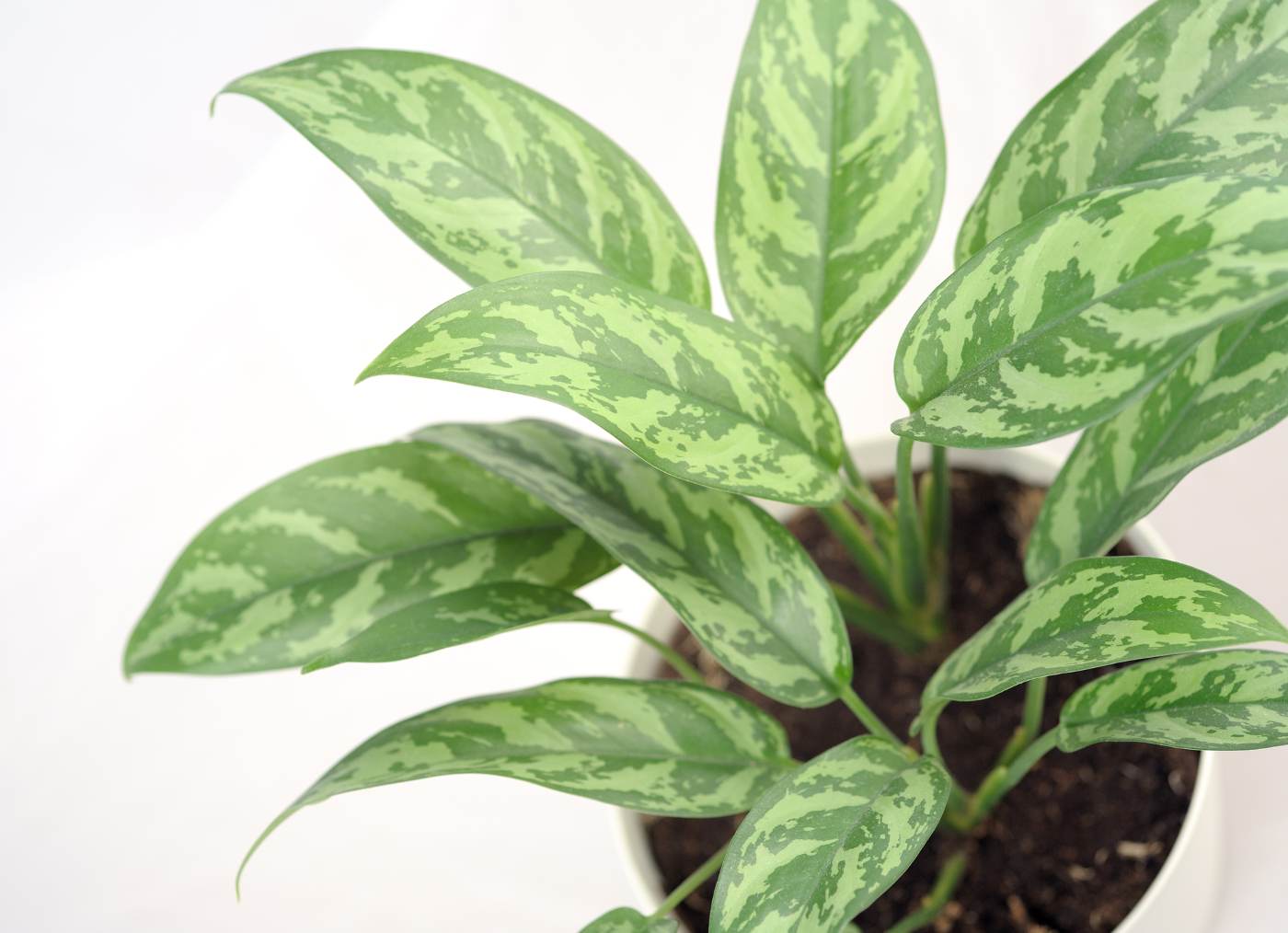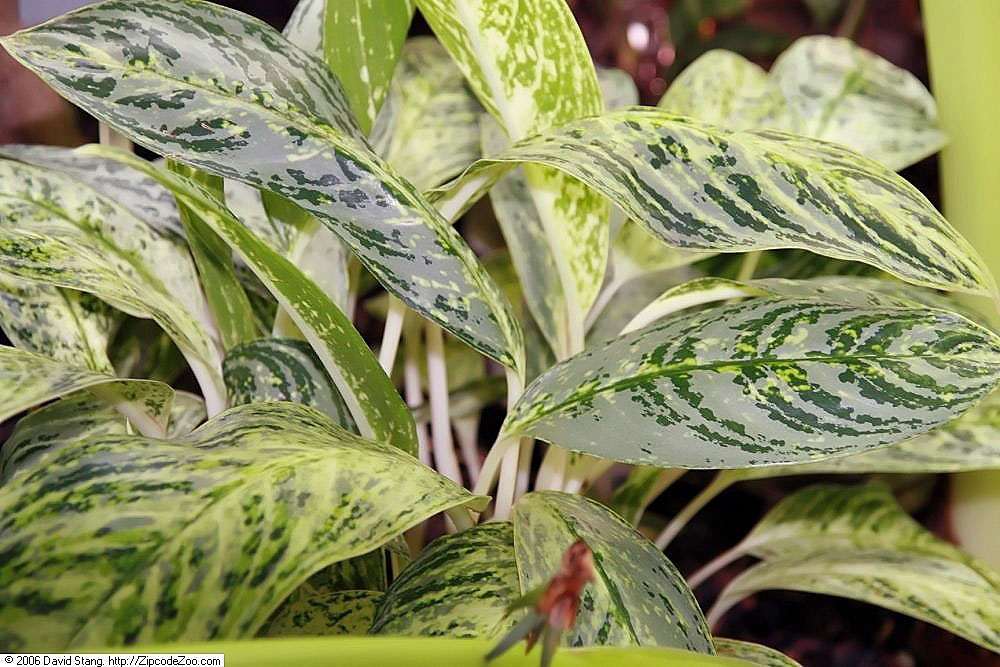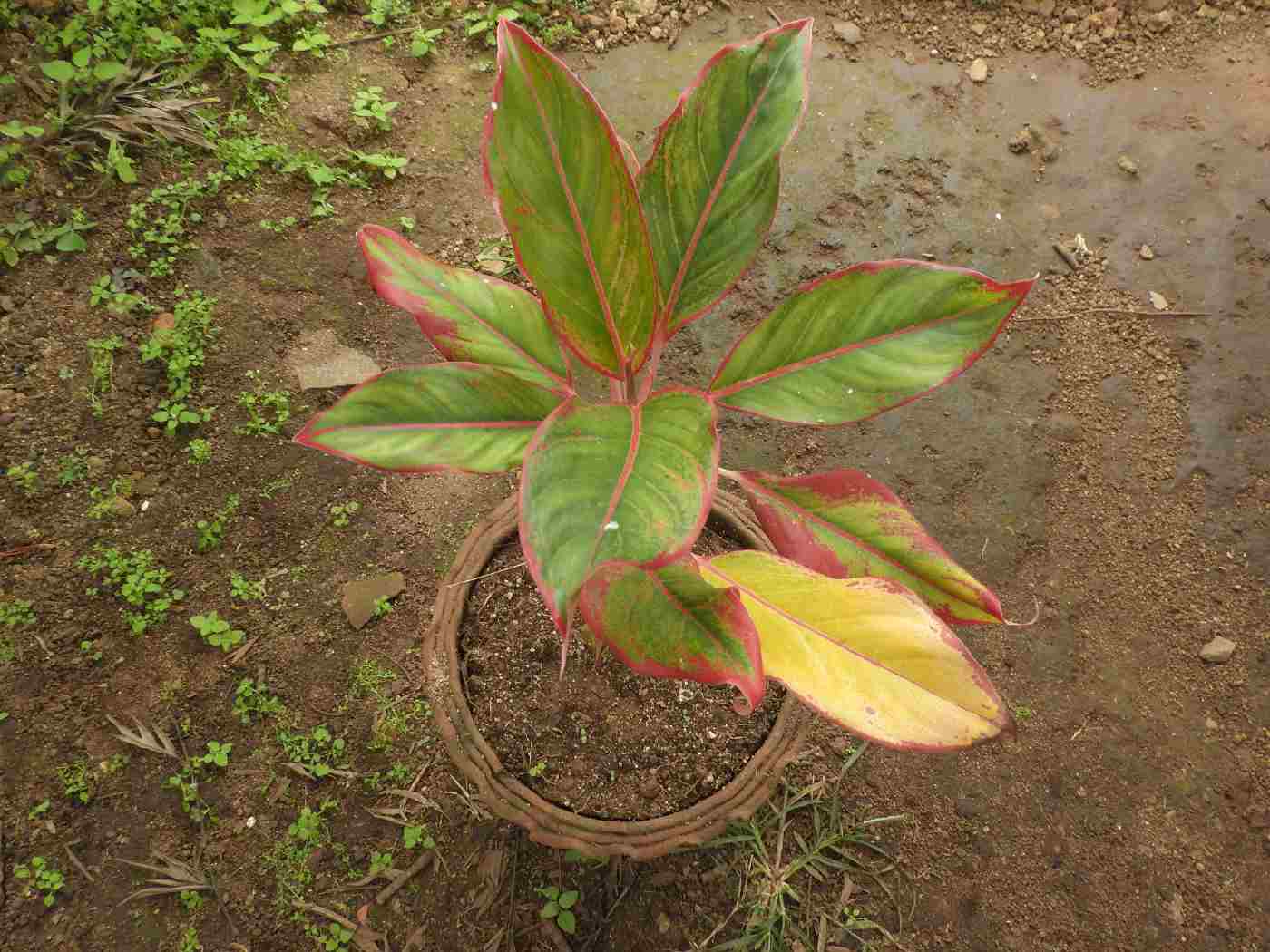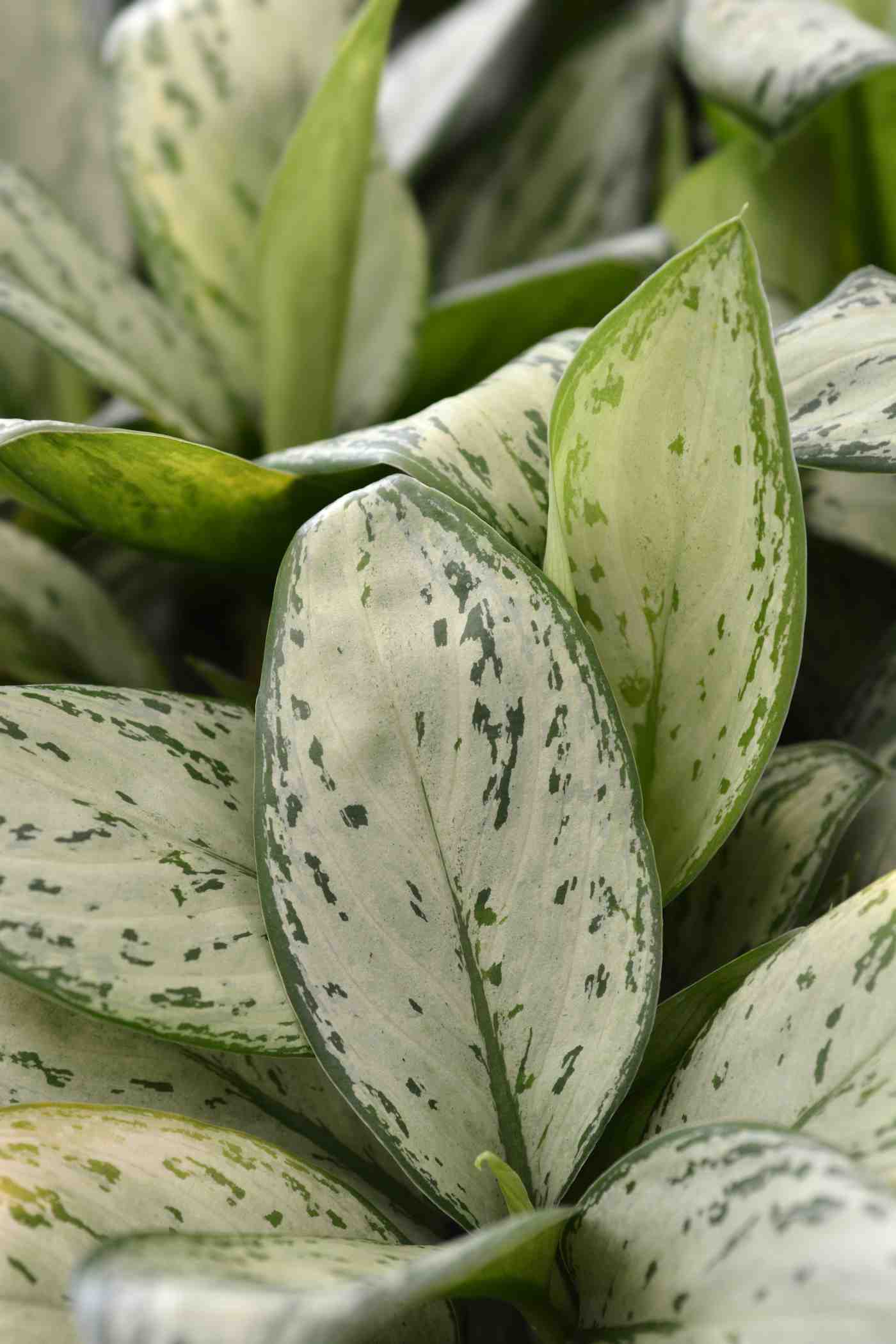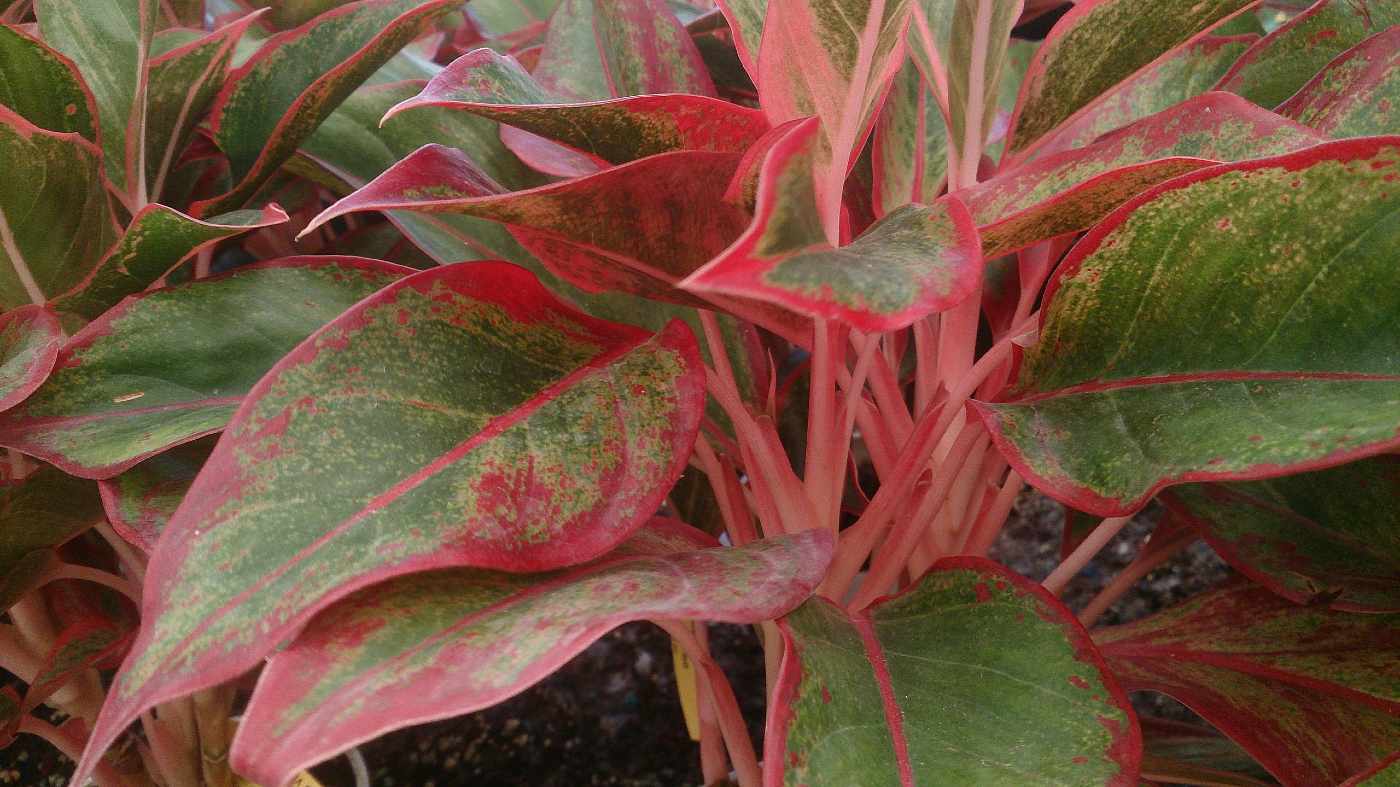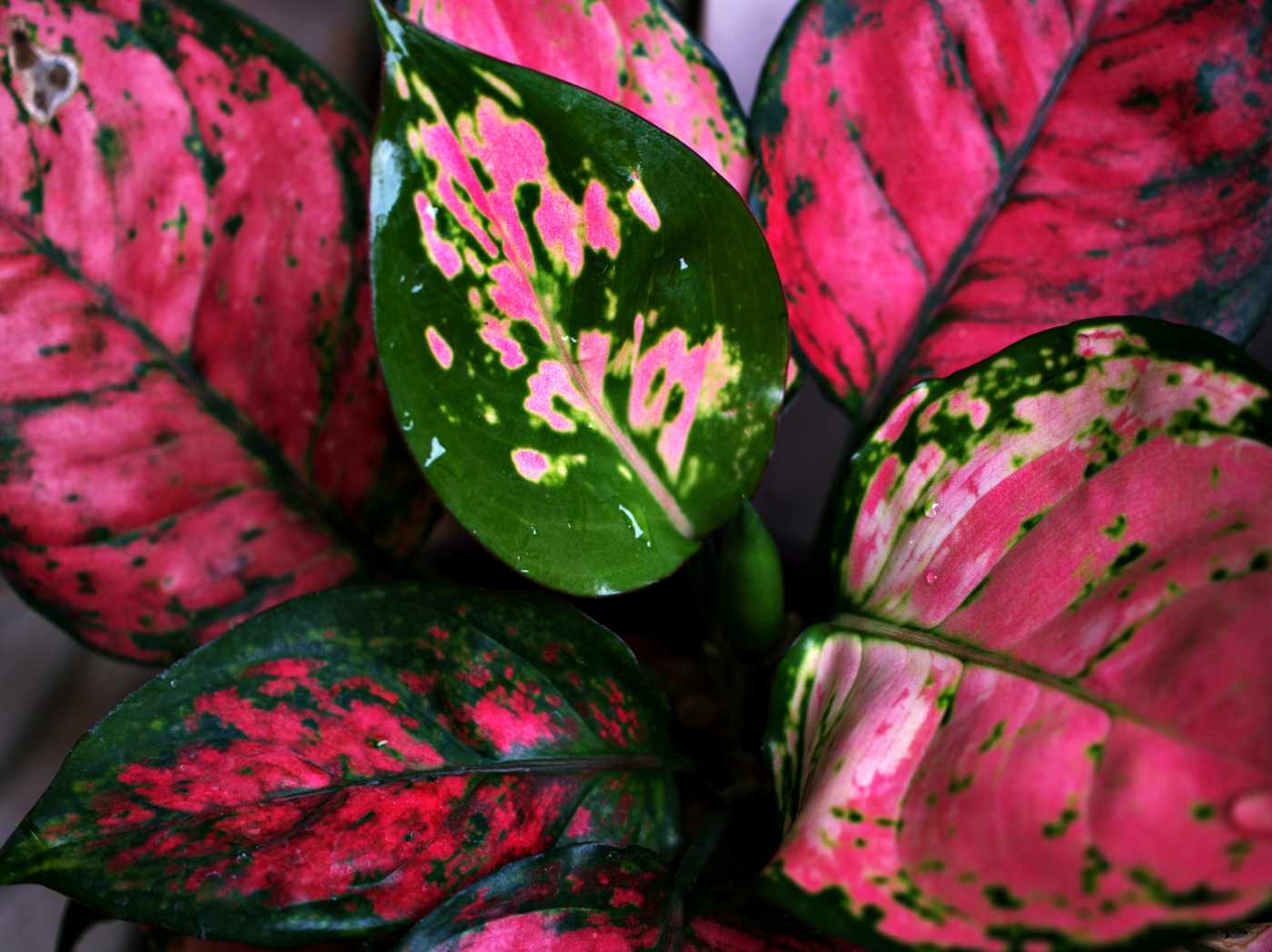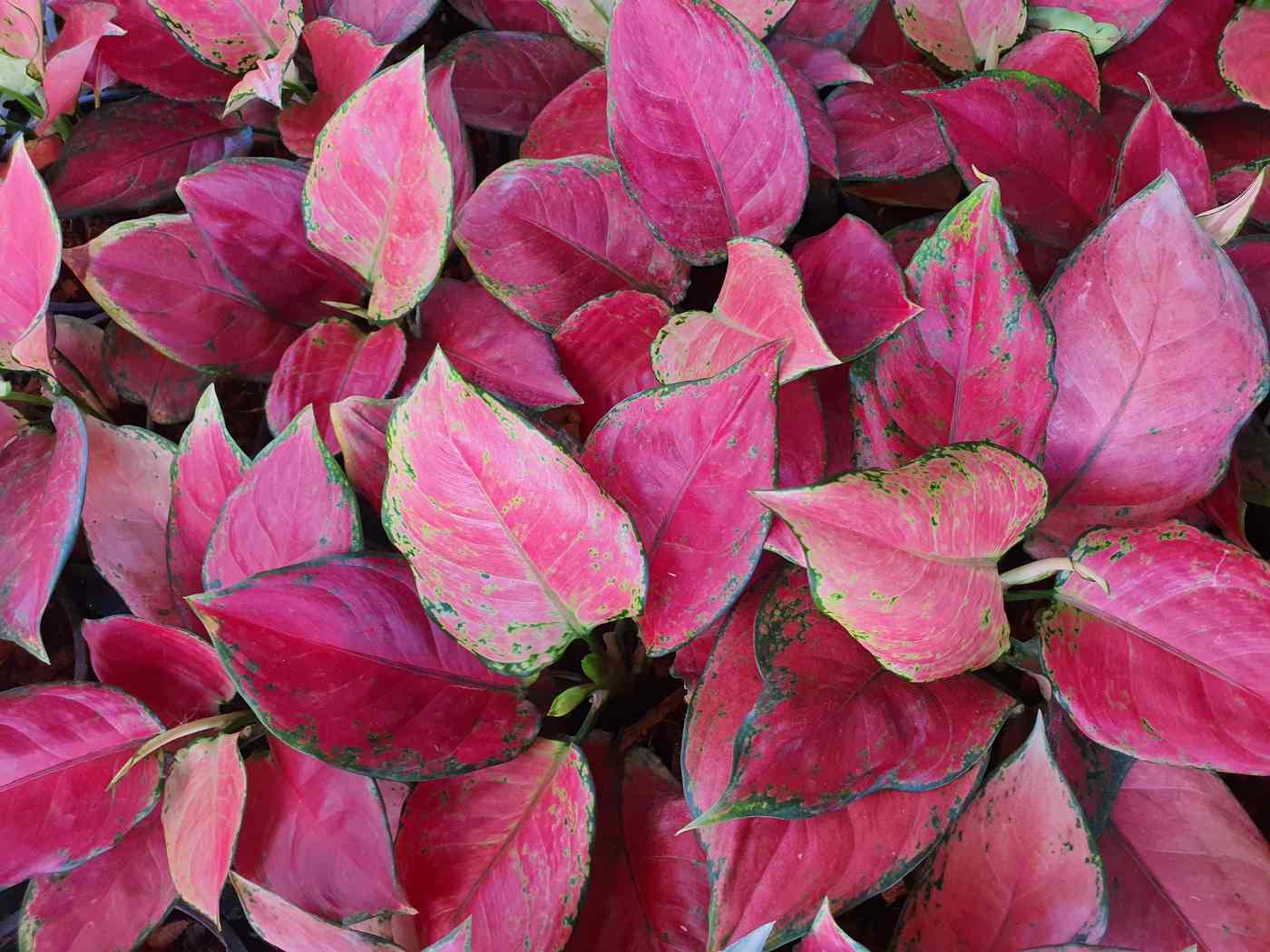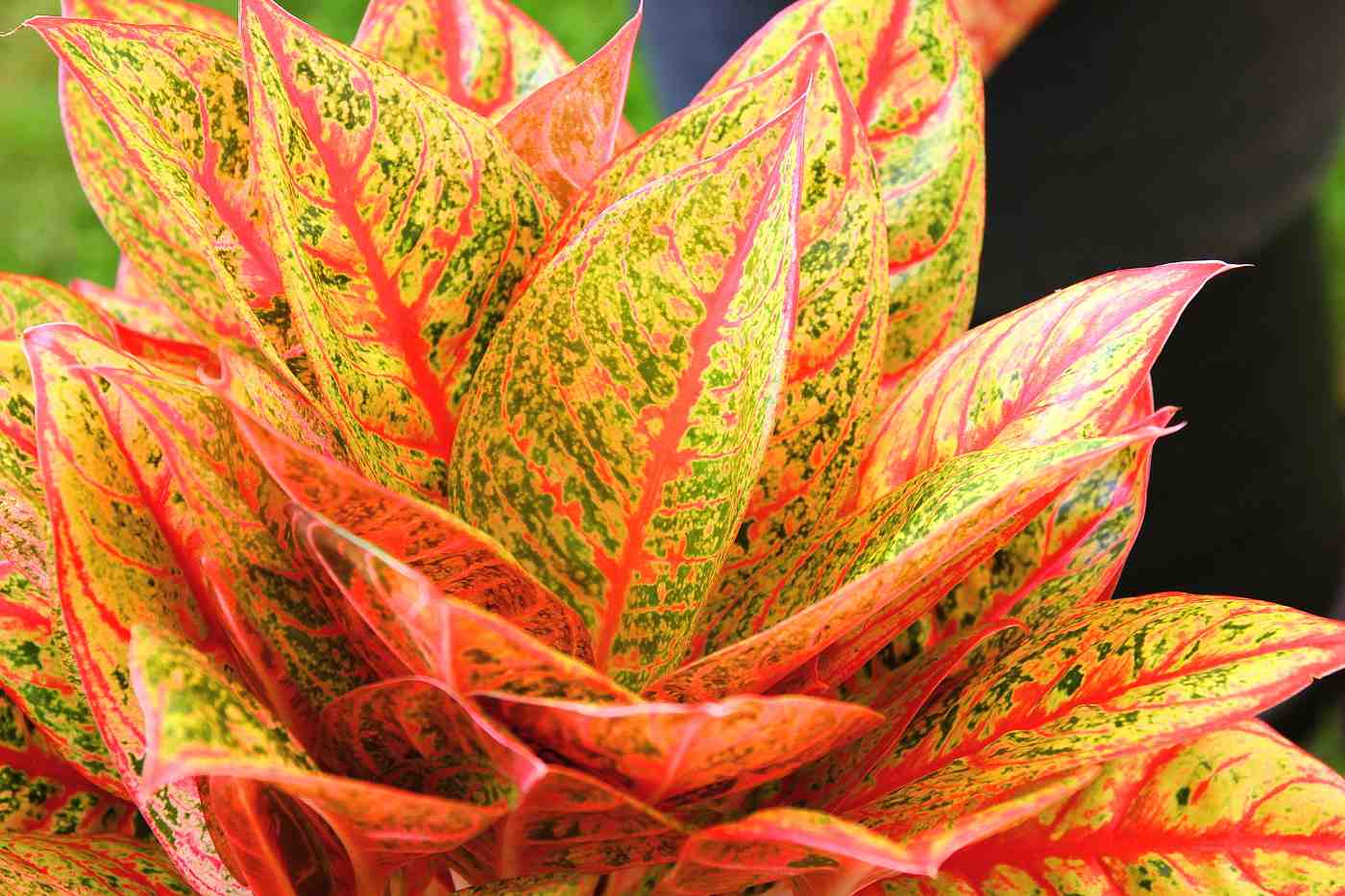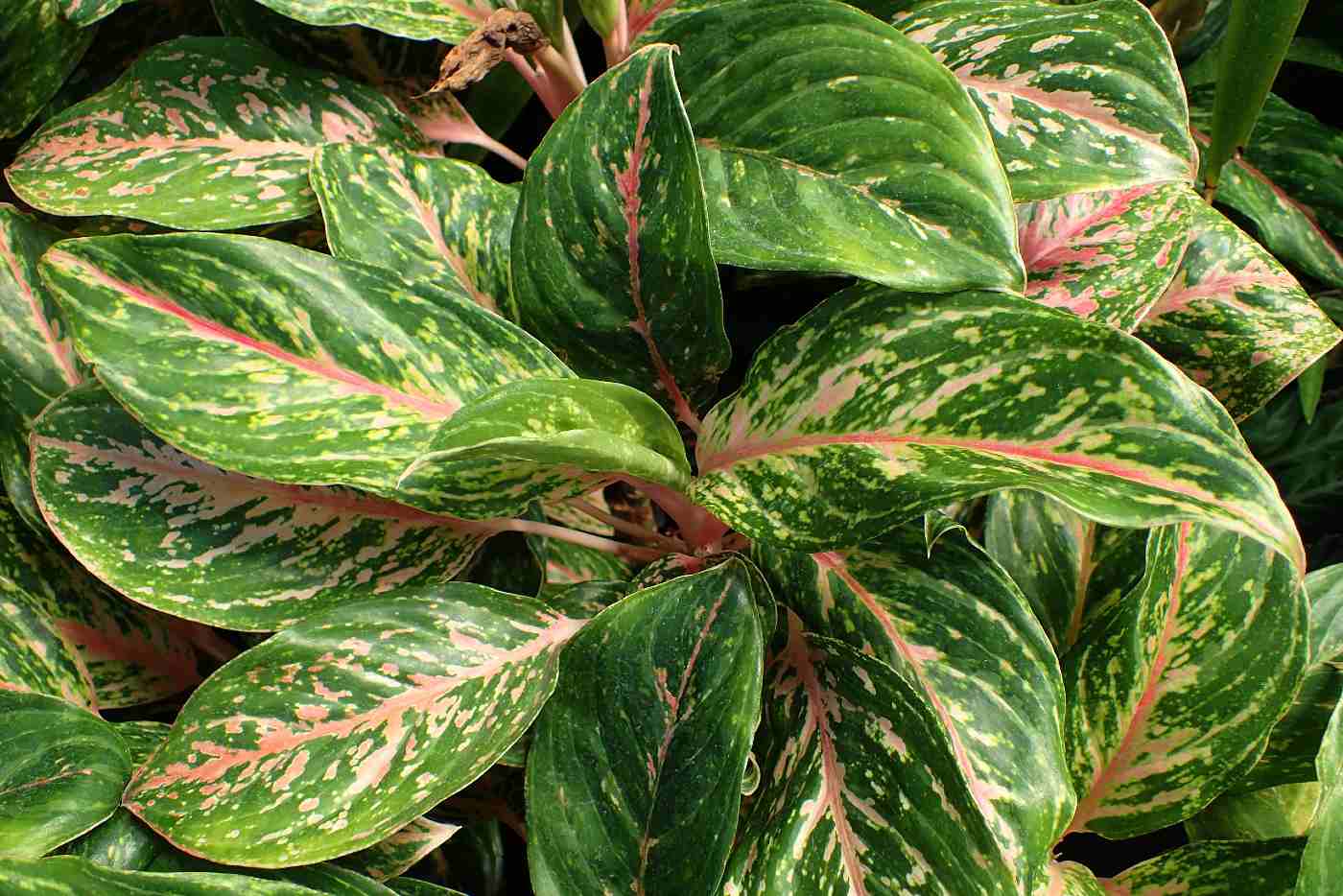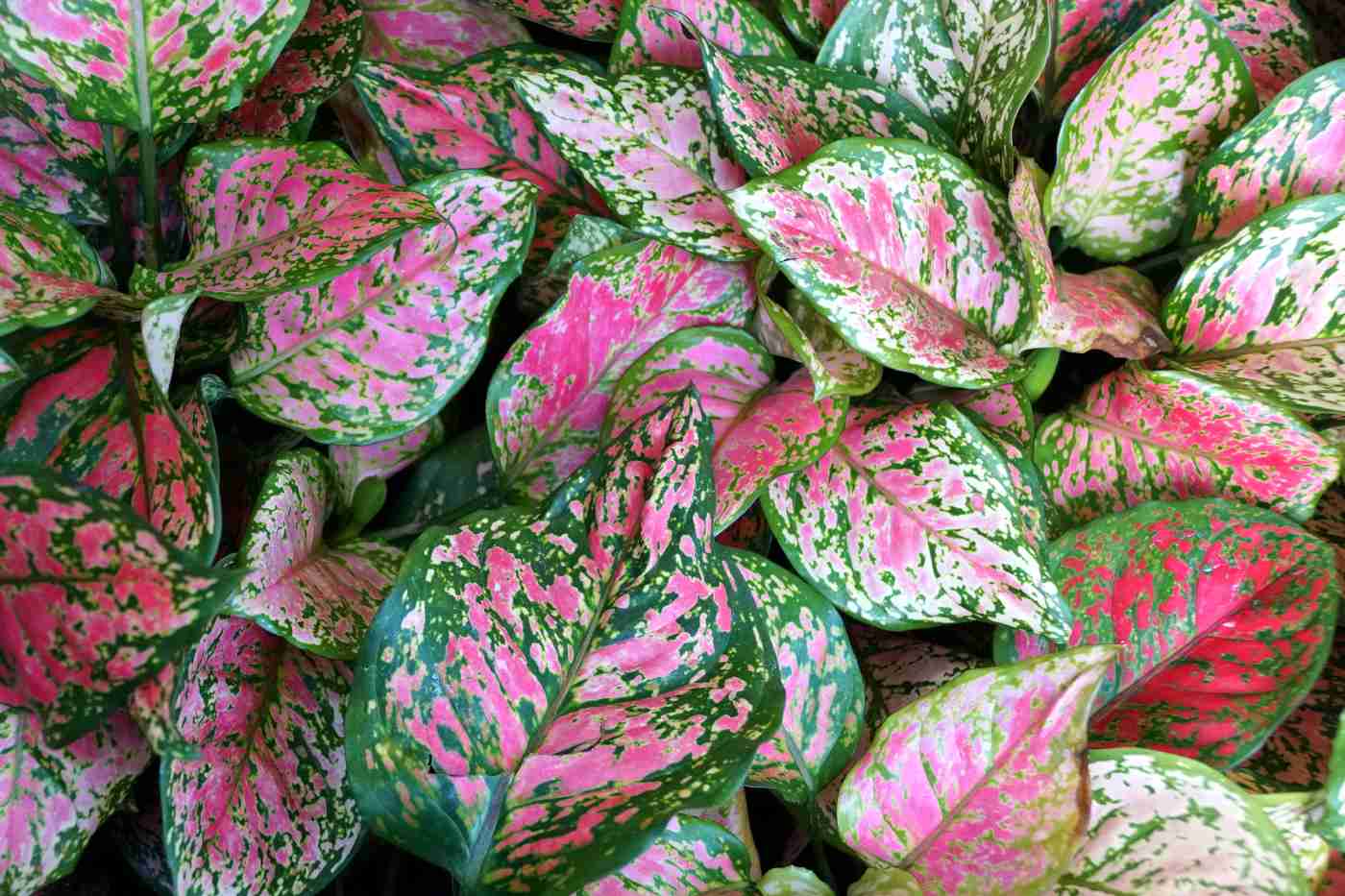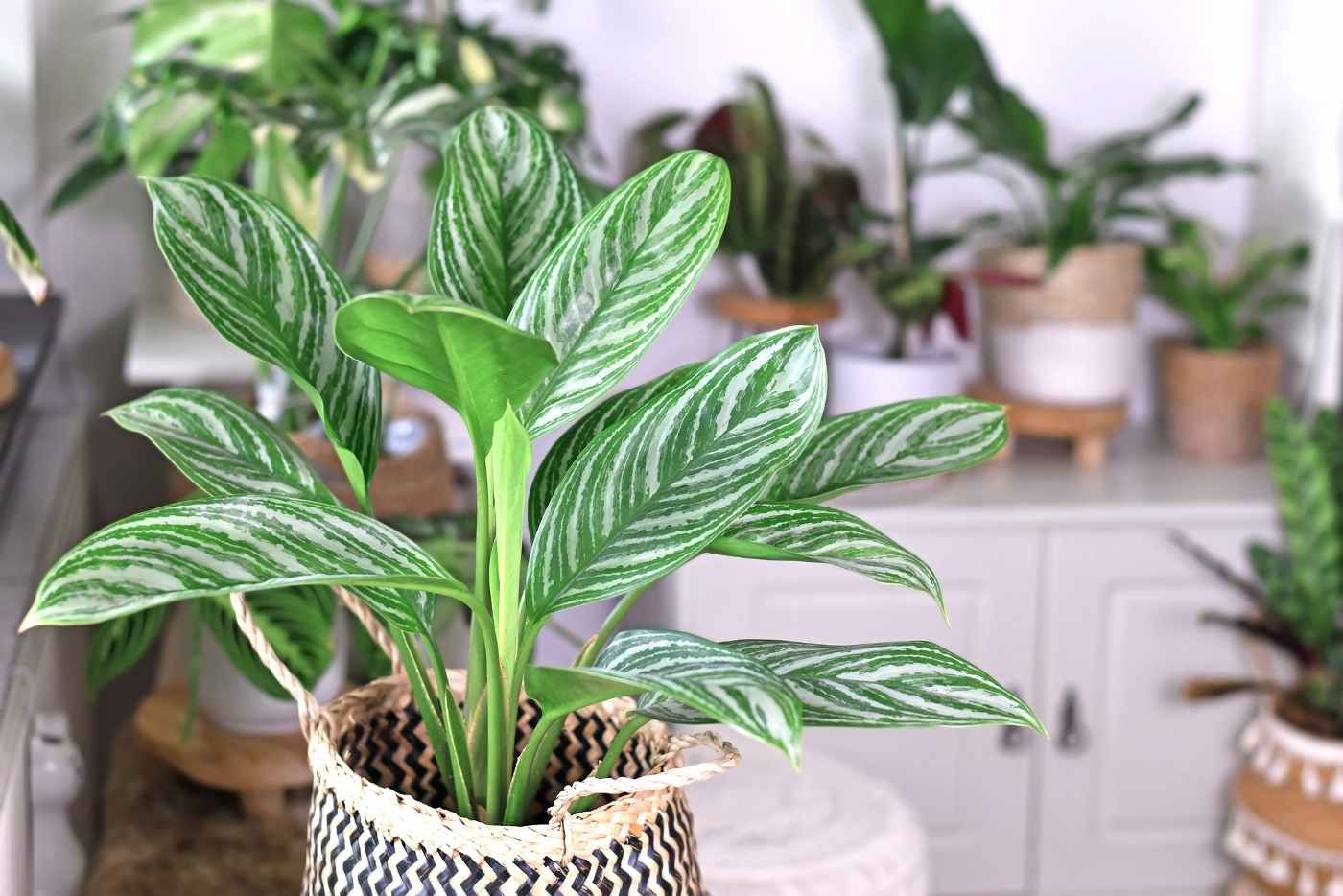Aglaonema commutatum, or Chinese evergreen, are incredible plants whose leaves are so gorgeous they don’t even need flowers. They do flower in outdoor habitats where they can thrive (that’s Zones 10-12), but they rarely flower indoors and, frankly, nobody really cares. What we’re all here for are the striking and diverse colours and patterns their leaves grace us with.
Their fans tend to collect them, and aficionados are sometimes hard put to decide which varieties of aglaonema to add next. So we put together this list of some of the most beautiful types of Chinese evergreens, with names so you know what you’re looking for if you go shopping for one and pictures so you know what you’re looking at.
But before we get to the list, we’re going to give you a few more reasons to love this plant.
How Many Varieties of Aglaonema Are There?
How many aglaonema varieties there are depends on who you ask. Palm Beach State College’s manual on landscape plants states that there are “roughly 22 natural species,” although that number will differ depending on the source. The Plant List says there are 24 accepted species.
There are literally dozens of varieties and more appear over time as horticulturalists and breeders develop new plants with ever more striking foliage.
How to Take Care of Aglaonema Varieties
Aglaonema plant varieties all have similar needs and are similarly easy to care for. Their likes include indirect sunlight, well-drained soil, consistent watering and a bit of a break from watering in winter. Their dislikes include hot, direct sun, cold winter temps, dried out or waterlogged soil and drafts.
To welcome your aglaonema home, plant it in a potting mix that drains well and water it thoroughly. Place in a spot that’s free of any drafts. Ideally, this will be somewhere with indirect or diffused light and some humidity. They’re honestly not too fussy, though. They can tolerate dry air and low light, which is part of the reason they’ve acquired such a following.
After your plant is settled, don’t overwater—the top inch or two of soil should be dry before you water again. You can treat your plant with a slow-release plant food during the spring and summer, but they like a rest in the winter, so stop fertilizing and water less over the winter months.
The Missouri Botanical Garden recommends maintaining your indoor temperatures at a minimum of 60°F to keep them happy.
They’re generally pretty hardy, but keep an eye out for pests and make sure to wipe down their broad leaves from time to time—they can get dusty.
And now that you know a bit more about how easy they are to care for, on to the show.
Silver Aglaonema Varieties
Silver goes with everything and these varieties will look amazing in any room of your home, regardless of your aesthetic.
Aglaonema Silver Bay
Grower and expert on aglaonema Gary Antosh tells us that Silver Bay came from a breeding program at the University of Florida in the 1990s.
This plant grows about 32 inches high, with broad leaves that are more rounded at the ends. The silver-grey centres of the leaves give way to a rich green edging. This plant needs some space as it grows wide as well as tall.
Aglaonema Silver Queen
Antosh states that Silver Queen is one of the most widely grown varieties of aglaonema in the world, as well as one of the oldest commercial hybrids. He explains that it became popular in the 1960s, after Nat DeLeon crossed Aglaonema curtisii and Aglaonema treubii.
It’s vibrant without being showy, which might account for its popularity. The leaves have a lovely striation and arc nicely out over a pot. It can grow to 34 inches high.
Aglaonema Silverado
Silverado’s leaves will add some depth to your houseplant game, with their rich, intricate mottling and subtle shades. Most of the leaf’s surface is a light silver-green, with deeper green margins and a more solid silver centre.
Note that aglaonema with lighter leaves need more light, while darker leaves can generally get away with lower light conditions. This variety will therefore be happy in a brighter spot of indirect light. It’s a dense plant that can reach 28 inches tall.
Green Aglaonema Varieties
For those who appreciate plants with a refined appeal, these green varieties of aglaonema are understated, but definitely not boring.
Aglaonema Maria/Emerald Beauty
Slow-growing and more compact than other varieties, Maria (also known as Emerald Beauty) is a fantastic choice for smaller spaces. The dark green of its leaves are overlaid with bars that can be lighter green or grayish. The leaves have lovely, crisp points.
It’s fairly cold-tolerant and thrives in low light, so it’s perfect for a corner spot that doesn’t get the sun. It reaches 30 inches in height.
Brilliant
Brilliant is notable for its bright white stems, which contrast beautifully with the vibrant green of the leaves. This is a shorter plant, reaching about 28 inches tall. It has a more open habit, which sets off the eye-catching striped patterns of its leaves.
The stripes are a paler green to cream colour, with lovely irregular splotching along their lines. As a lighter variety, it needs brighter light, so you can’t tuck it in a corner. Then again, you probably won’t want to.
Rotundum
This variety of aglaonema offers something a bit different, with its rounded, glossy leaves. The dark green is set off by pin stripes of pink and lighter coloured stems. New leaves appear pink until they unfurl, adding further contrast and interest.
It’s on the smaller side, with heights reaching 19 inches. You can keep this plant in very low light and still have a happy specimen. It does like its humidity, though, so be prepared to mist.
Maria Christina
Like Maria, Maria Christina is a compact, slow-growing plant that can tolerate colder temperatures. It can reach about 30 inches. The leaves cascade over the pot slightly as it grows, and they have a slight silvery tinge (which makes sense because Maria is descended from Silver Queen).
Their pale green centres are lightly splashed with darker green, which rings the edges, as well. The light leaves mean it will require more light than other, darker varieties.
Red Aglaonema Varieties
Red aglaonema are the showstoppers of the species, bringing bold flair that pairs especially well with modern décor.
Aglaonema Siam Aurora
More subtle than some other varieties of red aglaonema, Siam Aurora’s lanceolate leaves create unique and lovely contrasts between the red margins, midribs and stems and the green faces of the leaves. Gentle mottling adds some depth to the colouration.
Siam Aurora grows to 36 inches and is a faster grower than other varieties. It likes medium to bright indirect light, but otherwise isn’t too picky about its living conditions.
Aglaonema Red Valentine
This dramatic plant features high contrast leaves with gorgeous splashes of red and pink against bright green margins. Young leaves will be pink and gradually deepen to red, making it an interesting plant to watch as it grows.
Red Valentine is on the larger side for indoor aglaonemas, reaching 36 inches in height. They get broad, as well, so while this is a slow-growing plant, you’ll want to have a plan for its eventual size.
Aglaonema Red Anjamani
Bold and bright, Anjamani is a plant that stands out. While there can be green blotches on the leaves, their surfaces are almost entirely a bright, lustrous red with a bit of a sheen to it. Leaf margins are green, but they can be so narrow they’re hard to spot. The white stems complete its unique and attention-getting look.
These plants make lovely holiday gift plants, if you’re looking for something a bit different than the traditional poinsettia.
Siam Red
Bright red leaf margins, variegated green leaves and white stems make this variety a stylish addition to a houseplant collection. The red can be quite dazzling, so this is definitely a plant you’ll want to put in a location where it can show off.
Keep this plant in medium or high indirect light to keep its reds their brightest. It will grow up to 36 inches but tends to be less wide than bushier varieties.
Pink Aglaonema Varieties
Of all aglaonema varieties, pink varieties are perhaps the most beloved. They have a charm that livens up a houseplant collection and brightens up a home.
Aglaonema Pink Dalmatian
This adorable, slow-growing plant has pink midribs and is speckled with pink spots. The broad leaves have a hint of blue in the green and fall nicely over the pot as they mature. It’s a chic variety that sets off just about any décor.
Keep Pink Dalmatian in bright indirect light to keep the spots looking vibrant. They’ll fade in lower light. They can grow up to 36 inches tall and tend to be wide without being bushy.
Aglaonema Sparkling Sarah
Sparkling Sarah is a pretty plant with pink stems and midribs and pink stripes set against emerald-green leaves. It brings a little pop of colour to a room without being too flashy or over the top.
Dense and compact, Sparkling Sarah grows up to 24 inches tall, but it can get up to 36 inches wide, so it will appreciate a spot in your home where it can spread out. Keep in medium to bright indirect light.
Aglaonema Wishes
Those who like a lot of pink will love Wishes. The leaves are spread across with a lavish pink that can be pale or more towards red. The midribs and leaf margins offer a deep, glossy green contrast.
This plant can reach 36 inches, but has an upright habit, so it won’t grow as wide as some other varieties. You can grow it in low light, but if you want these pinks to stand out, keep Wishes in bright indirect light.
Aglaonema Lady Valentine
Lady Valentine is a beloved variety because of its fascinating patterns and colouring. Its pinks can go from pale to deep, and its mottling is unique to every leaf. Its lanceolate leaves have dark green margins and midribs that complement the pinks beautifully.
To keep the pinks their brightest, keep this plant in brighter light—it will lose its colour in heavy shade. More upright than bushy, Lady Valentine won’t need a ton of space. It gets about 20 inches tall.
White Aglaonema Varieties
White aglaonema can run the gamut from subtle interest to sparkling centerpiece. They have a minimalist vibe that offers brightness but never clashes.
Aglaonema Super White
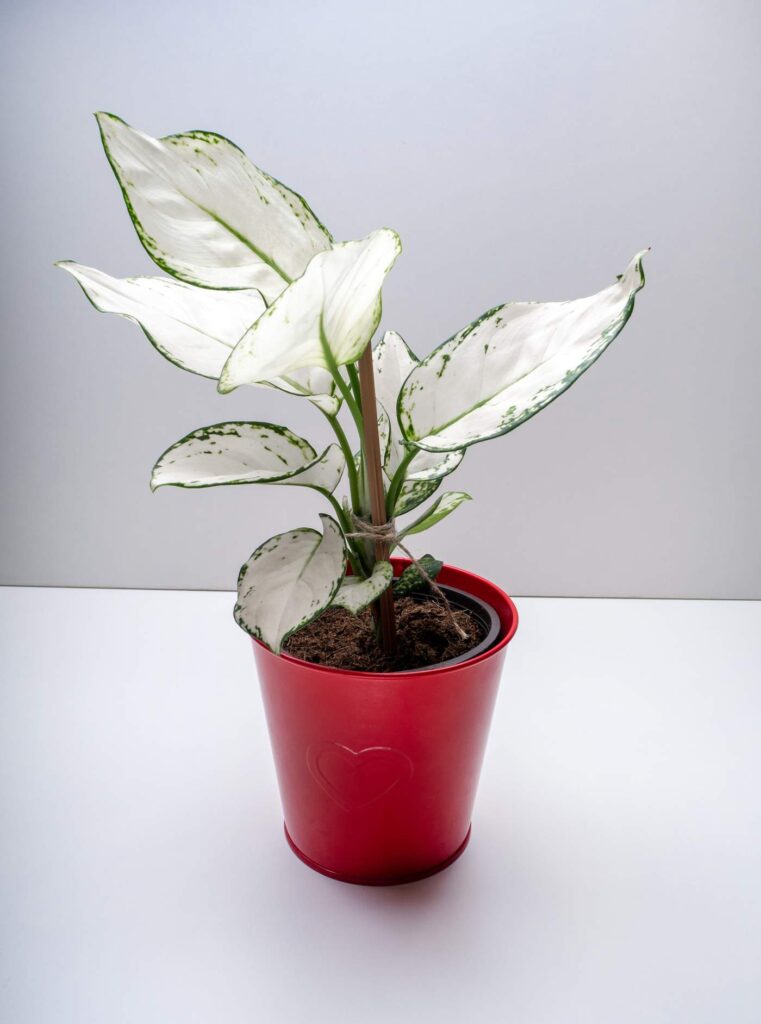
Super White is an absolute head-turner. Its leaves are almost completely white, with deep green margins, veins, midribs and random splotching to heighten the effect. Its lanceolate leaves can look more like large flower petals than actual leaves.
Keep Super White in bright indirect light if you want to maintain the high-contrast leaves and in lower light if you want that contrast to become more subdued. It will grow to 36 inches and is upright and compact.
Aglaonema Stripes
Stripes is another graduate of the University of Florida’s breeding program, says Antosh. True to its name, the leaves are striped with white, which contrasts boldly with the darker green of its foliage.
The leaves are long, dense and well-proportioned. The plant can reach 34 inches in height and is highly tolerant of a range of conditions. Its easy-going nature makes it a great choice for a novice plant owner.
Aglaonema Snow White
This variety brings a little brightness to a room with its variegated white and green leaves. The edges and midribs are a deep green, and green mottling makes every leaf and plant utterly unique.
Snow White can get quite tall (up to 47 inches), but its upright habit makes it a great plant to perk up a corner. It’s slow growing, so purchase a larger plant if you want a floor plant immediately.
Rare Aglaonema Varieties with Names
Rare aglaonema varieties can be hard to come by for a number of reasons. One is simply location. Many varieties simply seem to be more popular in some parts of the world than others, making them hard to find if you don’t live in an area where they’re commonly sold. Some aglaonema cochin varieties are in this camp.
They also could be rare because they’re new, have been superseded by hardier varieties, haven’t been extensively tested by their breeders or growers or haven’t done well when tested outside of a greenhouse.
Some of these include Aglaonema nitidum ‘Ernesto’s Favorite,’ Aglaonema ‘Rhapsody’ and Aglaonema ‘Abidjan,’ but there are many others. One rare variety stands out as a plant we should all admire, however, even if we only ever get to see it in a picture.
Aglaonema Pictum Tricolor
Truly a one-of-a-kind houseplant, this variety is sometimes called a camouflage plant because of its leaves’ resemblance to jungle camouflage. Dark, medium and pale green splotches are scattered across the lance-shaped leaves, which arc beautifully when they’re mature.
This plant is not cheap and it can be difficult to find. If you do splurge on one, keep it in bright indirect light so the variegation stays crisp and clear. It’s a compact plant, growing to about 24 inches.
We hope this too brief foray into the world of aglaonemas has help you connect aglaonema varieties with names and faces, and maybe even given you some new houseplant ideas to look out for.
Feature image, Image 1, 4, 7, 9-12, 15-18: Depositphotos; Image 2: Forest and Kim Starr; Image 3: David Stang; Image 5: David Stang: Image 6: Yercaud-elango; Image 8: Mokkie; Image 13: Krzysztof Ziarnek, Kenraiz; Image 14: lienyuan lee; Image 19: Seth Woodworth

